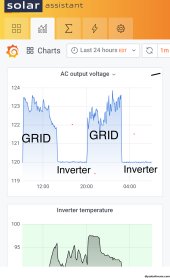Zwy
Solar Wizard
It's the voltage fluctuations that is the cause of the light flicker. The voltage fluctuations will eventually cause early failure of inductive loads such as a fridge, freezer, and motor driven loads. It will also cause circuit boards to fail, every appliance sold today has a circuit board in it.Why does the flickering bother everyone so much? I care not.
Last edited:




